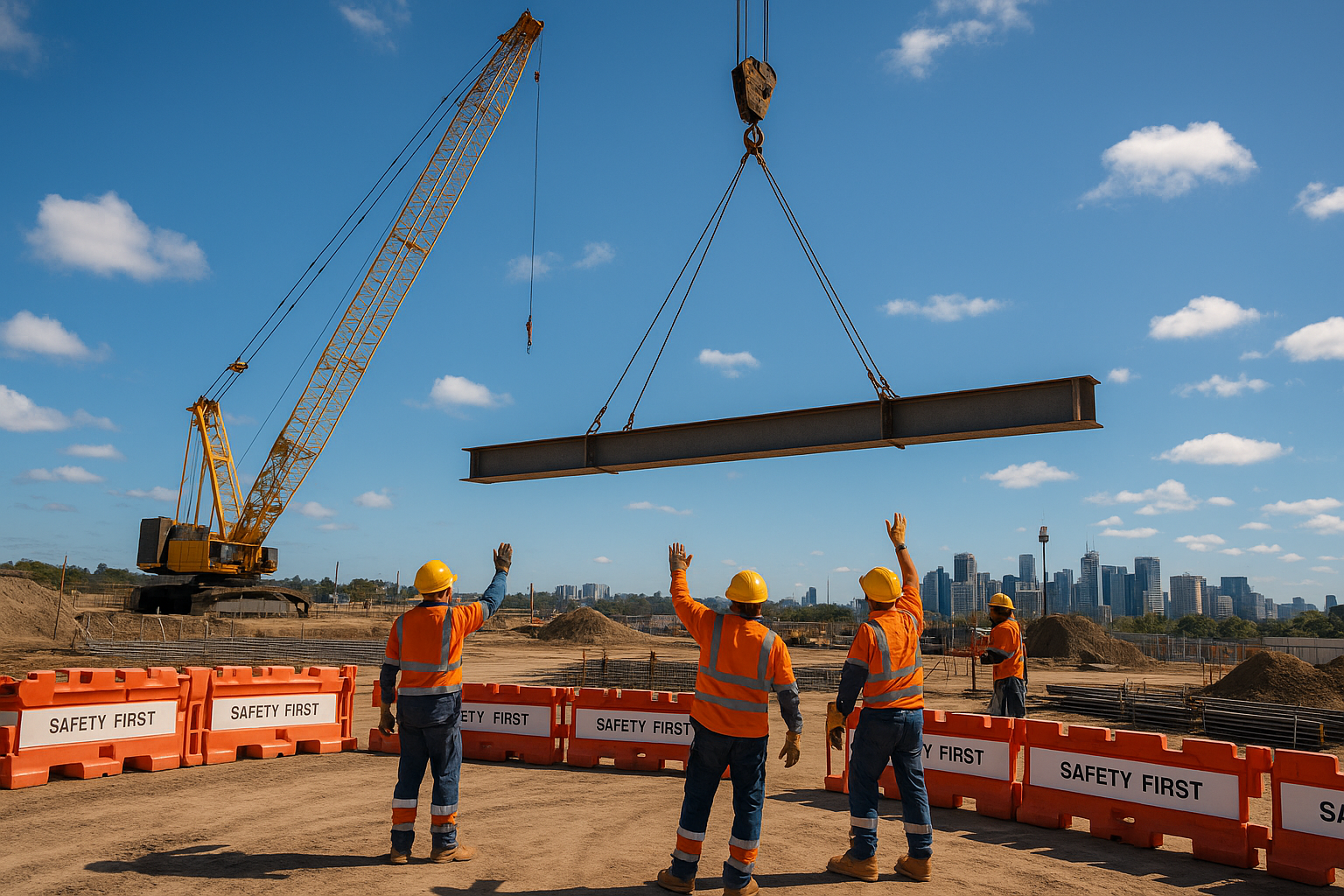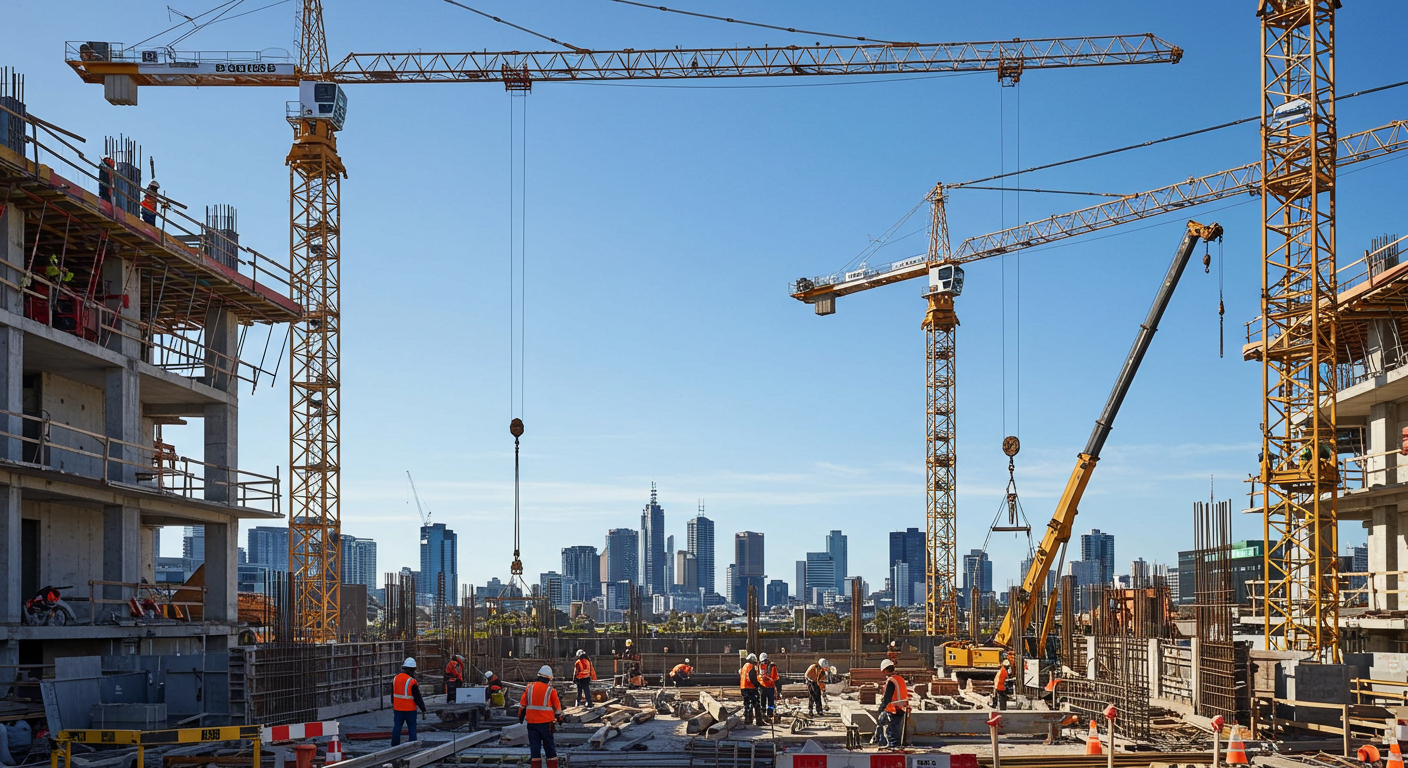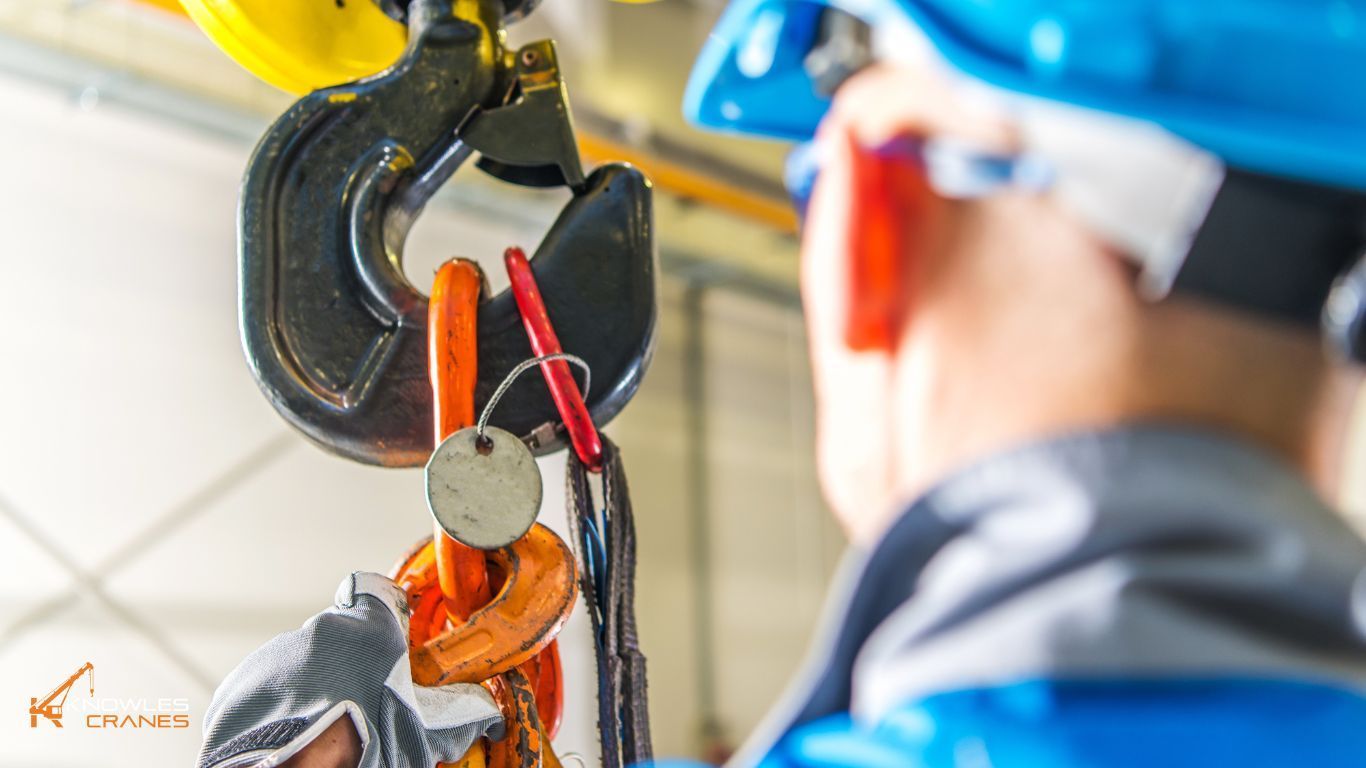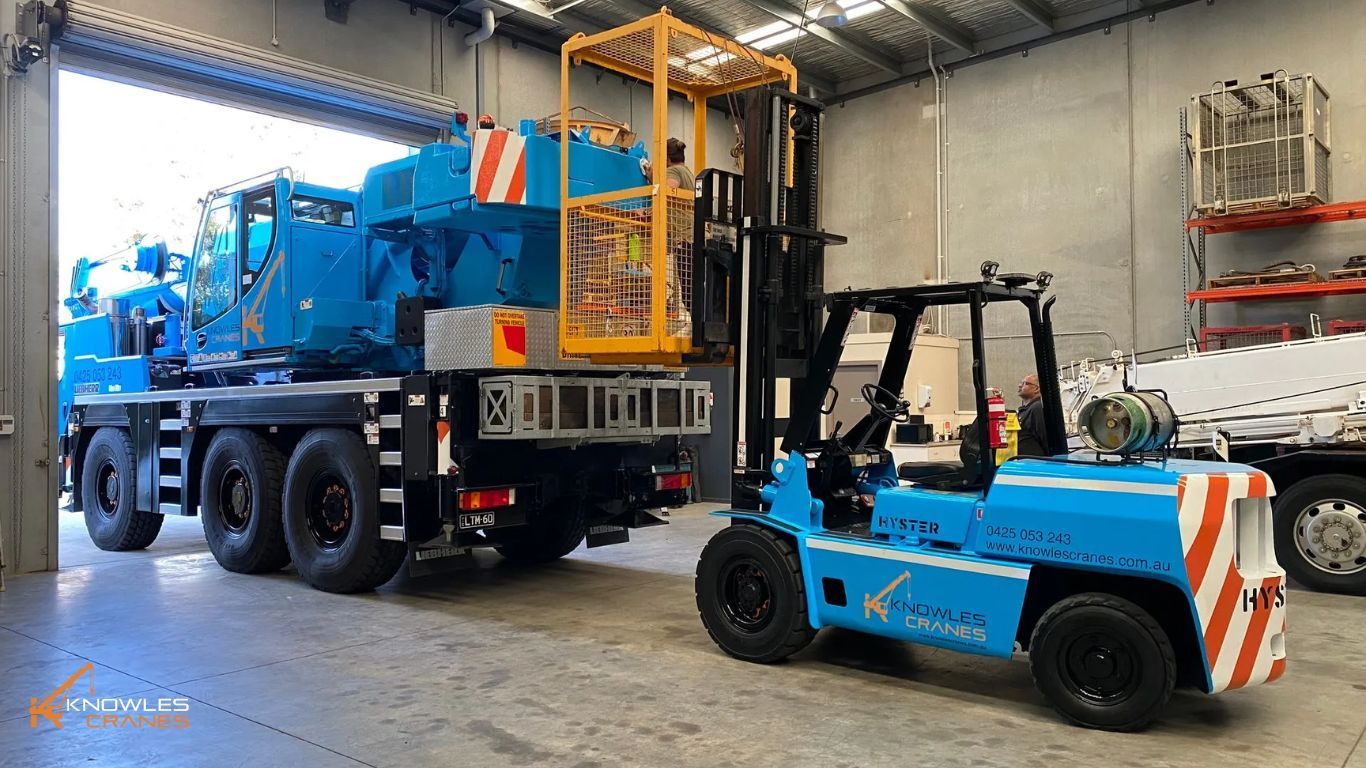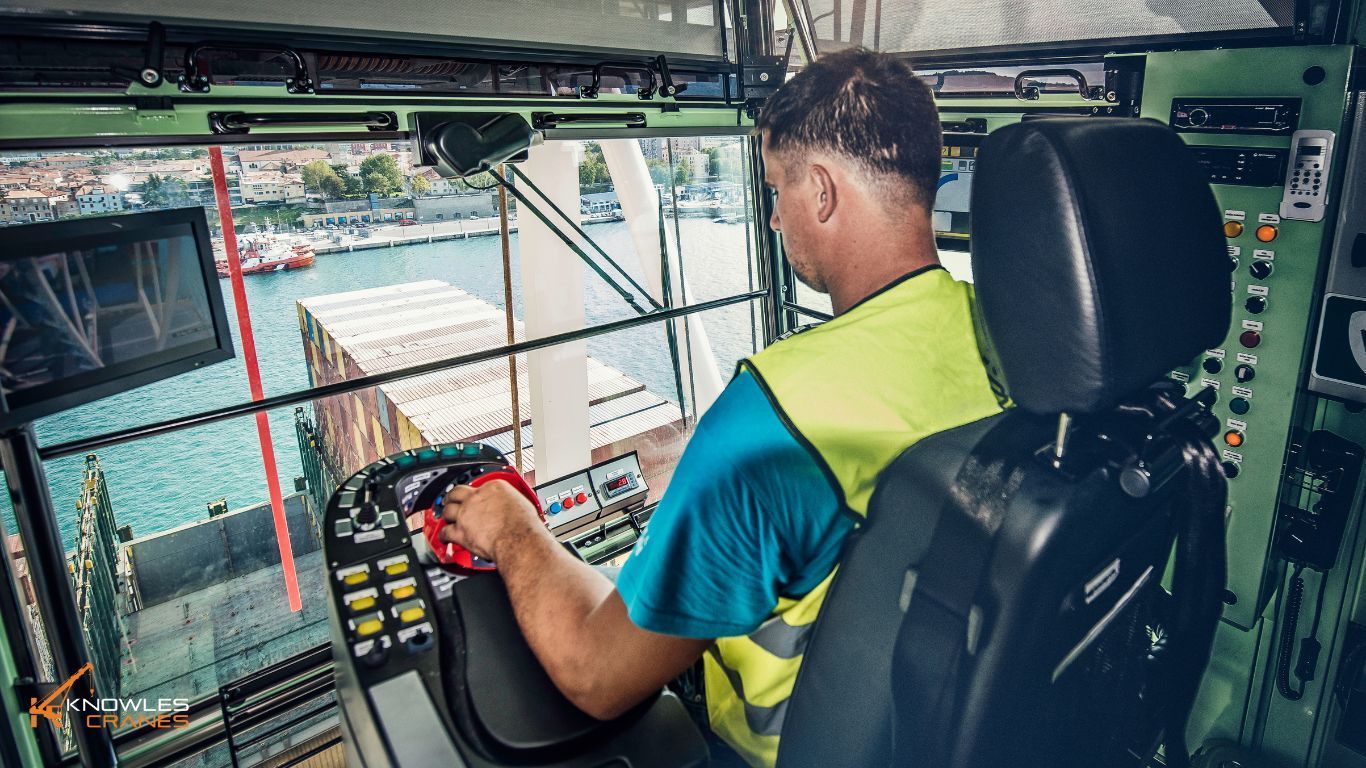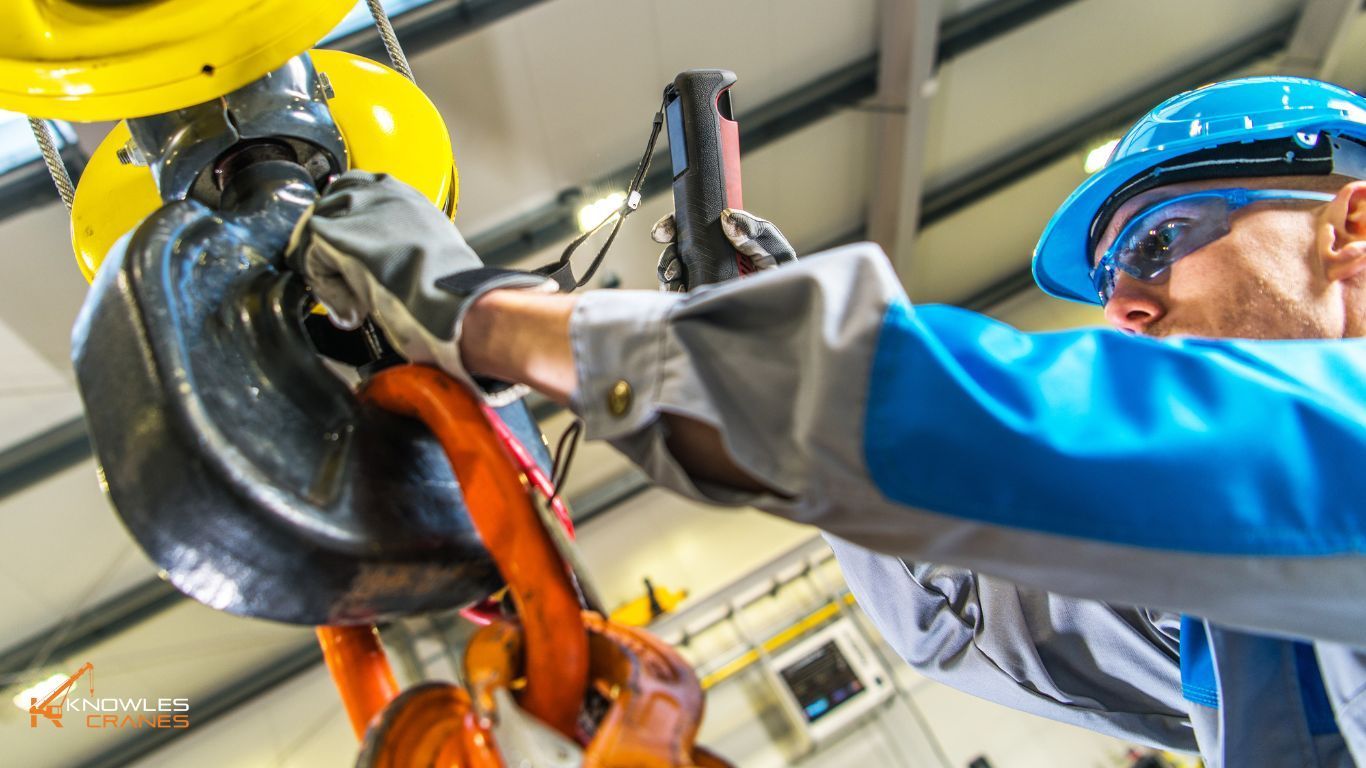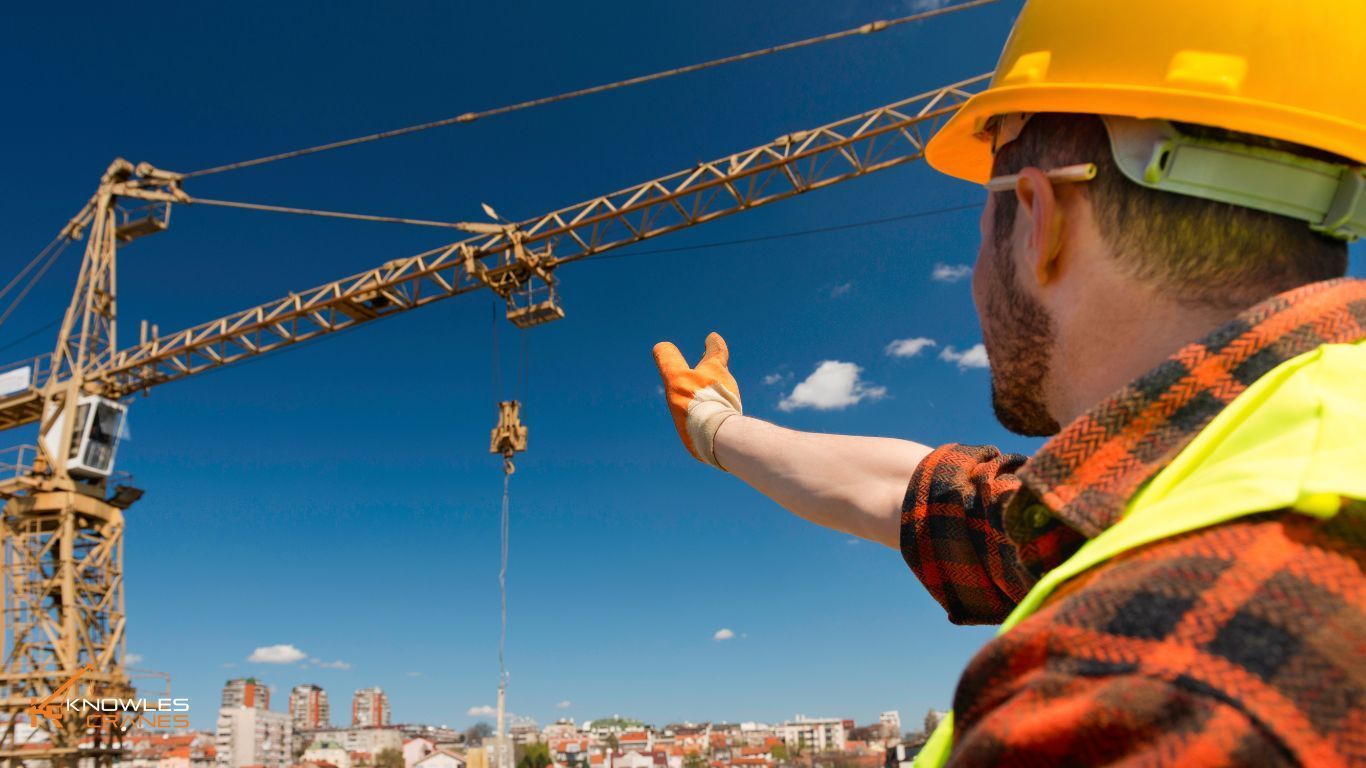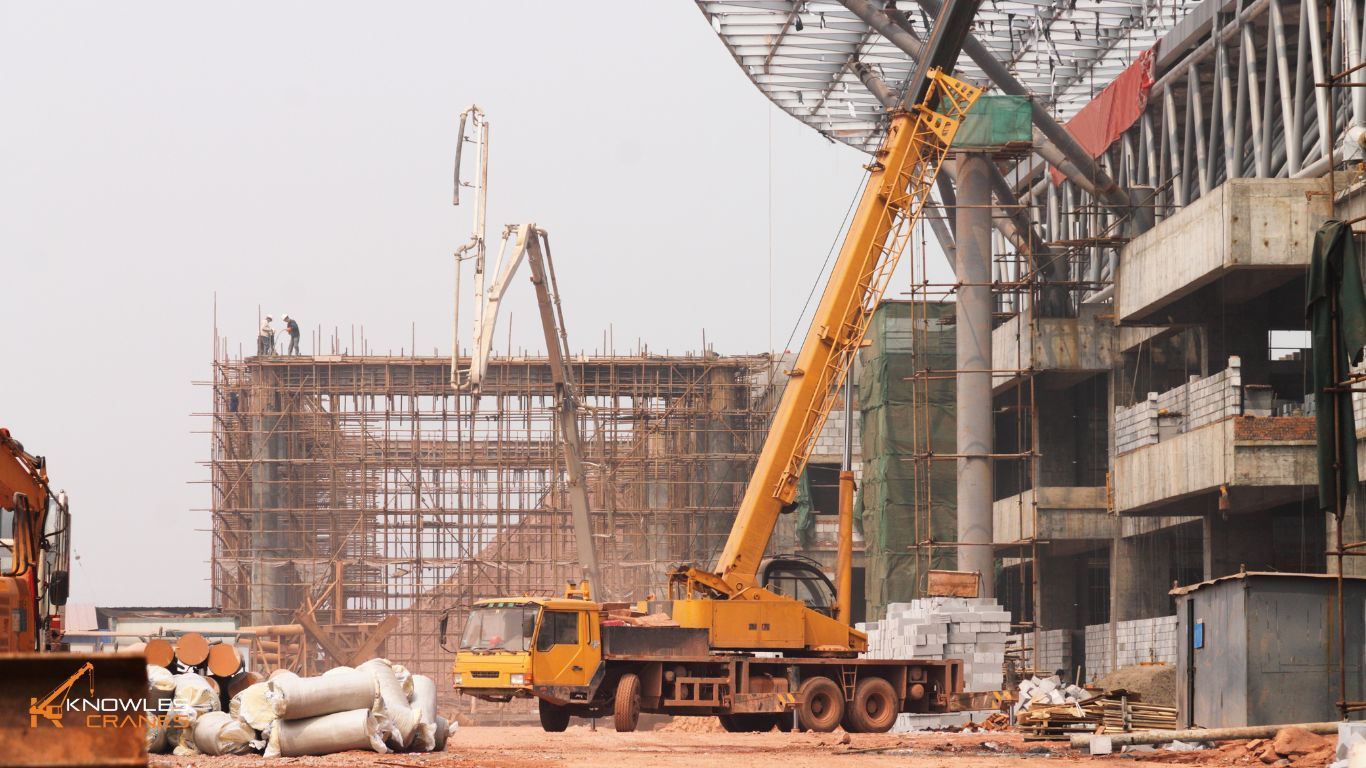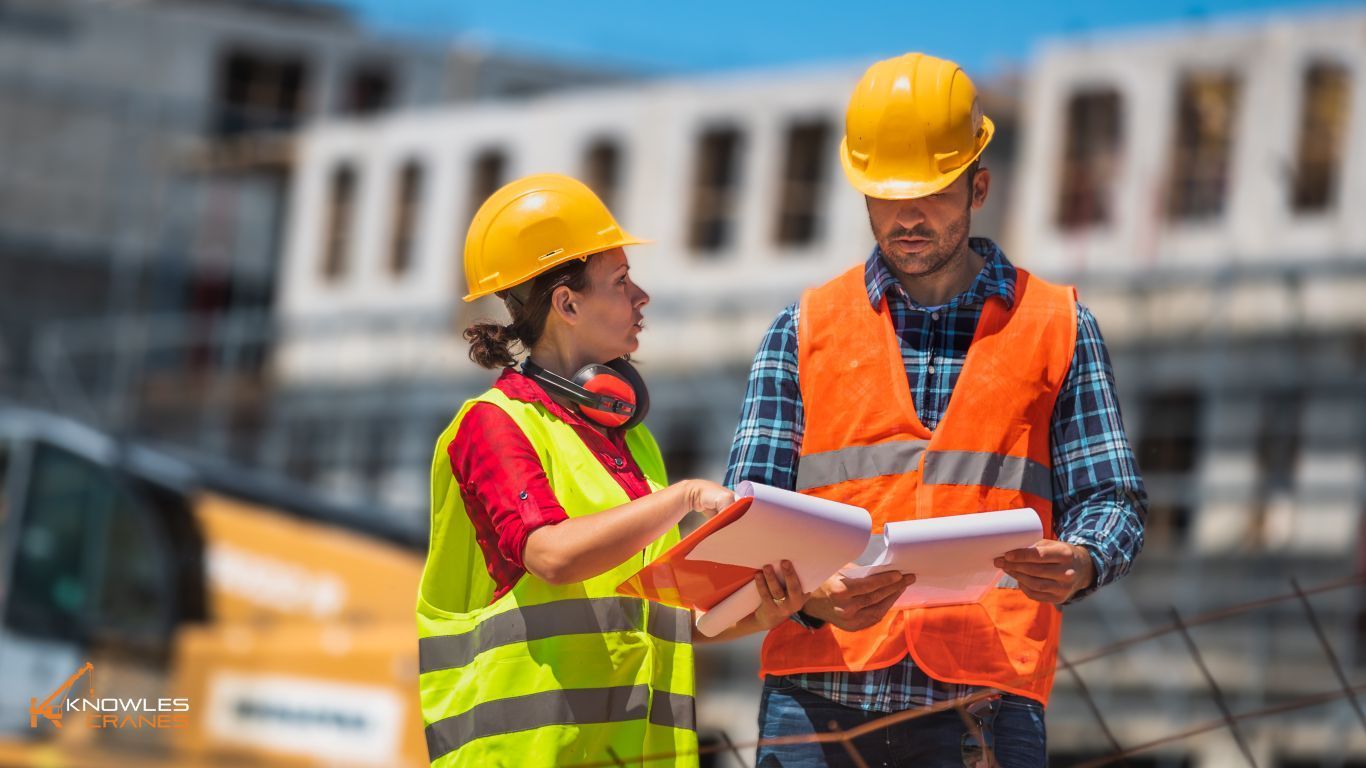Which Crane to Use? 7 Criteria to Pick the Right Crane
“Which crane to use?” is one of the most common questions asked at the start of a construction project. The wrong choice can create safety risks, unexpected costs, or delays. Crane selection depends on seven key criteria, including load weight, lift height, site conditions, project duration, budget, compliance, and operator availability.
Knowles Cranes helps you make the right choice by offering tailored crane hire that reduces costs, avoids downtime, and ensures safe, efficient lifts for any project. You can reach out through our website to discuss your project needs, review costs upfront, and plan the most reliable lifting solution. With that support, let’s look at the seven criteria that guide which crane to use.
1. Load Weight and Dimensions
The first step in selecting a crane is understanding the load. The weight and the size of the object determine the type of crane needed.
- Heavy and oversized loads, such as bridge girders or prefabricated concrete panels, typically require a crawler crane, designed to lift heavy weights with stability.
- Moderate to light loads such as structural steel or HVAC units might be lifted by a tower crane or mobile hydraulic crane, depending on reach and site layout.
It’s not only about how heavy something is. Long, wide, or irregular loads place extra pressure on the crane and rigging system, so capacity charts must be checked to confirm the crane can handle the weight and the physical dimensions of the lift.
2. Height and Distance of the Load
After determining the weight, the issue is how high and how far the load has to travel.
- Tower cranes are ideal for high-rise projects. They can lift very high and move loads across large distances.
- Mobile cranes are more suitable for mid-rise or suburban sites. They are quicker to set up and flexible when extreme height is not needed.
- Luffing-jib tower cranes are used in narrow spaces, such as between existing buildings, because they can move their jib up and down.
Remember that a crane can lift a heavy load close to its base but cannot handle the same weight at maximum reach. Height and reach requirements narrow down your options fast.
3. Terrain and Ground Conditions
The type of ground and access to the site play an important role in deciding which crane to use.
- Rough-terrain cranes are designed for use on unpaved or rough terrain. They come equipped with large wheels and outriggers that allow them to stabilize quickly and move efficiently on soft or irregular surfaces.
- All-terrain cranes combine highway travel with off-road capability, making them suitable for projects that require road mobility and stability on rough ground.
- Crawler cranes distribute their weight over tracks, allowing them to operate on soft soils, sand, or where it would be difficult for wheeled cranes.
Urban projects often benefit the city but face challenges with narrow streets or restricted access. In these circumstances, compact cranes such as Frannas or spider cranes prove to be the most convenient choice.
4. Project Duration
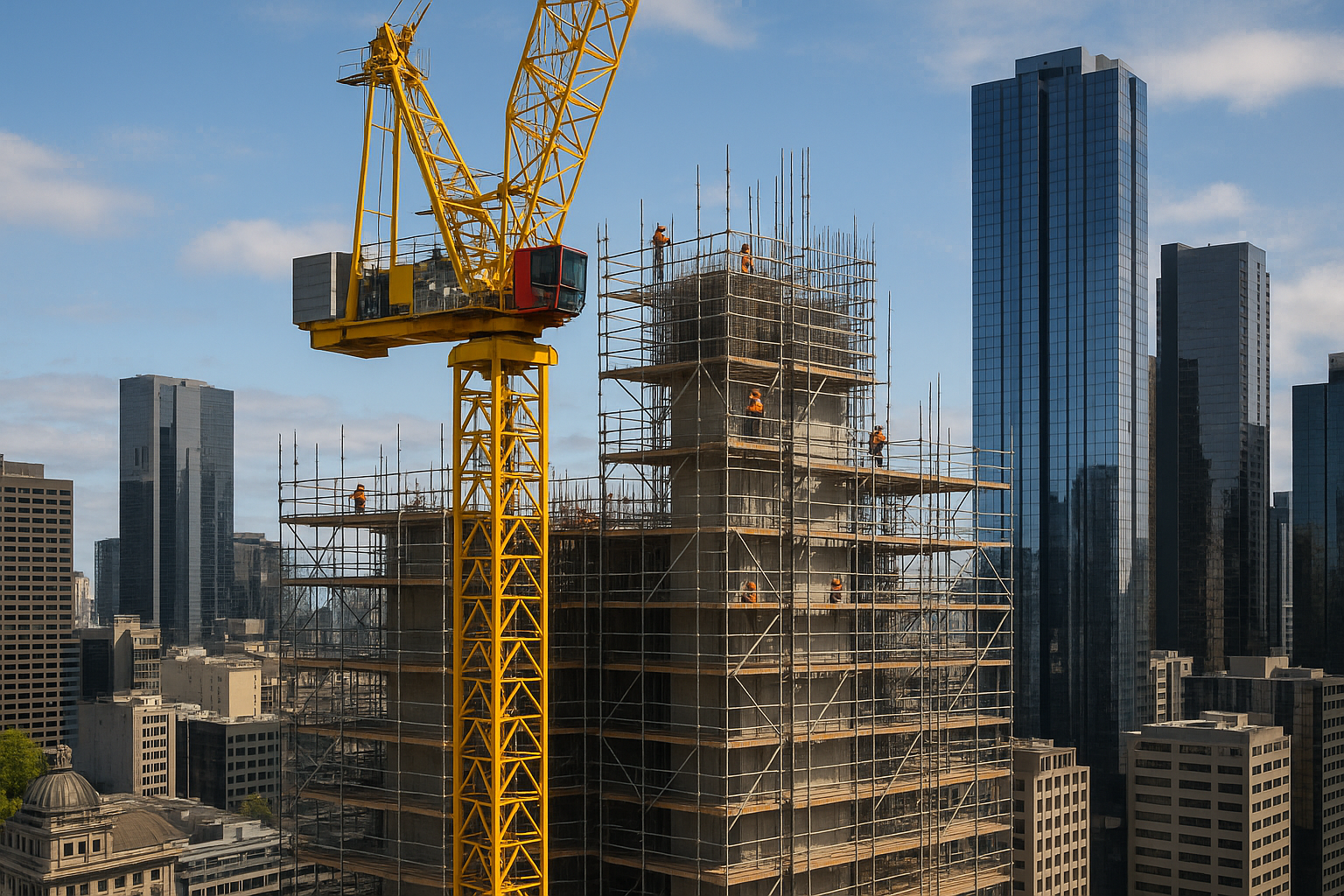
The length of a crane can be just as important as what it lifts.
- Tower cranes are ideal for projects that run over many months. While set-up and dismantling take time, they become cost-effective when used daily on long-term builds such as high-rises.
- Mobile cranes suit short-term or one-off lifts. They can be brought to site, set up within hours, complete the work, and move on quickly.
- Crawler cranes are practical for large infrastructure or industrial projects that last several months. Once assembled, they can remain on site and provide consistent heavy-lifting capacity without needing frequent relocation.
Choosing a crane with the project timeline in mind prevents unnecessary costs. A short job does not justify the expense of a tower crane, while a long-term build will benefit from the efficiency of a permanent fixture.
5. Cost and Budget
Crane hire can be one of the largest expenses on a project, so understanding the financial impact of each option is critical.
- Tower cranes are rented monthly. While the upfront cost includes transport, assembly, and dismantling, they are great value on long-term projects where constant use offsets the initial spend.
- Mobile cranes are more affordable for short jobs, often hired by the day or hour. Costs usually include the operator, but rigging crews, escorts, and road permits may add to the bill.
- Crawler cranes involve high mobilisation costs since they need to be transported and set up on site. They become economical when the project requires heavy lifting capacity over several months.
Always consider the total cost, not just the rental price. Other delivery fees, permits, and installation charges can be extremely costly. If you compare the overall price initially before making your decision, you will be able to remain within budget and prevent surprise costs.
6. Safety and Licensing
Safety is the most important part of any crane operation. In Australia, strict rules apply to both the machines and the people operating them.
- Operator licences: Crane operators must hold the right High Risk Work licence for the type of crane they are using. Doggers and riggers, who attach loads and guide lifts, also need licences.
- Regular inspections: All cranes must be checked before use and go through scheduled maintenance and major inspections to make sure they remain safe.
- Standards and codes: Work must follow Australian Standards such as AS
1418 and AS 2550, along with Safe Work method statements for each lift.
- Site practices: Exclusion zones, correct rigging, and clear communication are essential to reduce risks during operation.
Following these rules is not just about compliance. It protects workers, reduces downtime from accidents, and gives project owners confidence that every lift is carried out safely.
7. Operator Availability and Mobility Needs
Finally, consider who will be operating the crane and how often it must move.
- Franna cranes are popular for their “pick-and-carry” ability. They can lift small loads, drive with them onboard, and drop them at another spot without needing outriggers each time.
- Spider cranes are ideal when only small lifts are needed inside buildings or restricted spaces.
- If the job needs constant movement, a mobile crane works best. For long-term lifting in one spot, a crawler or tower crane is more suitable.
By planning for operator availability and site mobility, you can be confident the crane will suit the job.
Which crane to use? A quick Table overview
| Crane Type | Summary | Best For |
|---|---|---|
| Tower Crane | Load & Dimensions: Moderate–High, repeated lifts Height / Reach: Very high, wide coverage Terrain: Needs an engineered base Duration: Long-term projects Cost: High setup, efficient when used daily Safety: HRW tower licence, strict erection standards Operator & Mobility: Skilled crew, fixed position | High-rise buildings, CBD construction |
| Mobile Crane | Load & Dimensions: Moderate, versatile loads Height / Reach: Medium–High (varies by model) Terrain: Works on stable ground Duration: Short-term use Cost: Lower hire, hourly/daily rates Safety: HRW slewing mobile licence, routine checks Operator & Mobility: Widely available, quick relocation | Suburban or mid-rise projects |
| All-Terrain Crane | Load & Dimensions: High capacity Height / Reach: High Terrain: Roads and rough ground Duration: Medium–Long projects Cost: Higher hire and transport permits Safety: HRW, complex travel permits Operator & Mobility: Skilled operators, redeploy fast | Remote projects, mixed terrain |
| Rough-Terrain Crane | Load & Dimensions: Medium Height / Reach: Medium Terrain: Uneven, unpaved sites Duration: Short–Medium use Cost: Moderate hire Safety: Pre-start checks, outrigger use Operator & Mobility: Commonly, regionally limited road travel | Regional/outback construction |
| Crawler Crane | Load & Dimensions: Very high, oversized loads. Height / Reach: High Terrain: Soft soil, sand, gravel Duration: Long-term projects Cost: High transport/setup, efficient over time Safety: HRW, major inspections. Operator & Mobility: Specialist crew, stays on site | Infrastructure, mining, wind farms |
| Franna (Pick-and-Carry) | Load & Dimensions: Low–Medium Height / Reach: Low Terrain: Firm ground Duration: Short or ad hoc tasks Cost: Affordable Safety: HRW, strict carry limits Operator & Mobility: Very mobile, drives with a load | Moving loads quickly across the site |
| Spider Crane | Load & Dimensions: Low Height / Reach: Low Terrain: Indoors, tight spaces Duration: Short, specific tasks Cost: Moderate hire Safety: Needs outriggers, floor checks Operator & Mobility: Specialist operators, compact setup | Indoor lifts, restricted access |
Conclusion
Selecting the right crane is never about picking one standard option; it’s about matching the machine to the project’s specific needs. By weighing load size, lift height, site terrain, project duration, budget, safety requirements, and operator availability, you can avoid costly mistakes and delays. In the end, smart crane selection is what keeps projects safe, efficient, and on schedule.
Selecting the right crane is never about picking one standard option; it’s about matching the machine to the project’s specific needs. By weighing load size, lift height, site terrain, project duration, budget, safety requirements, and operator availability, you can avoid costly mistakes and delays. In the end, smart crane selection is what keeps projects safe, efficient, and on schedule. If you’re planning a project and need expert help, Knowles Cranes can guide you with the right crane and skilled operators for your site and budget.
